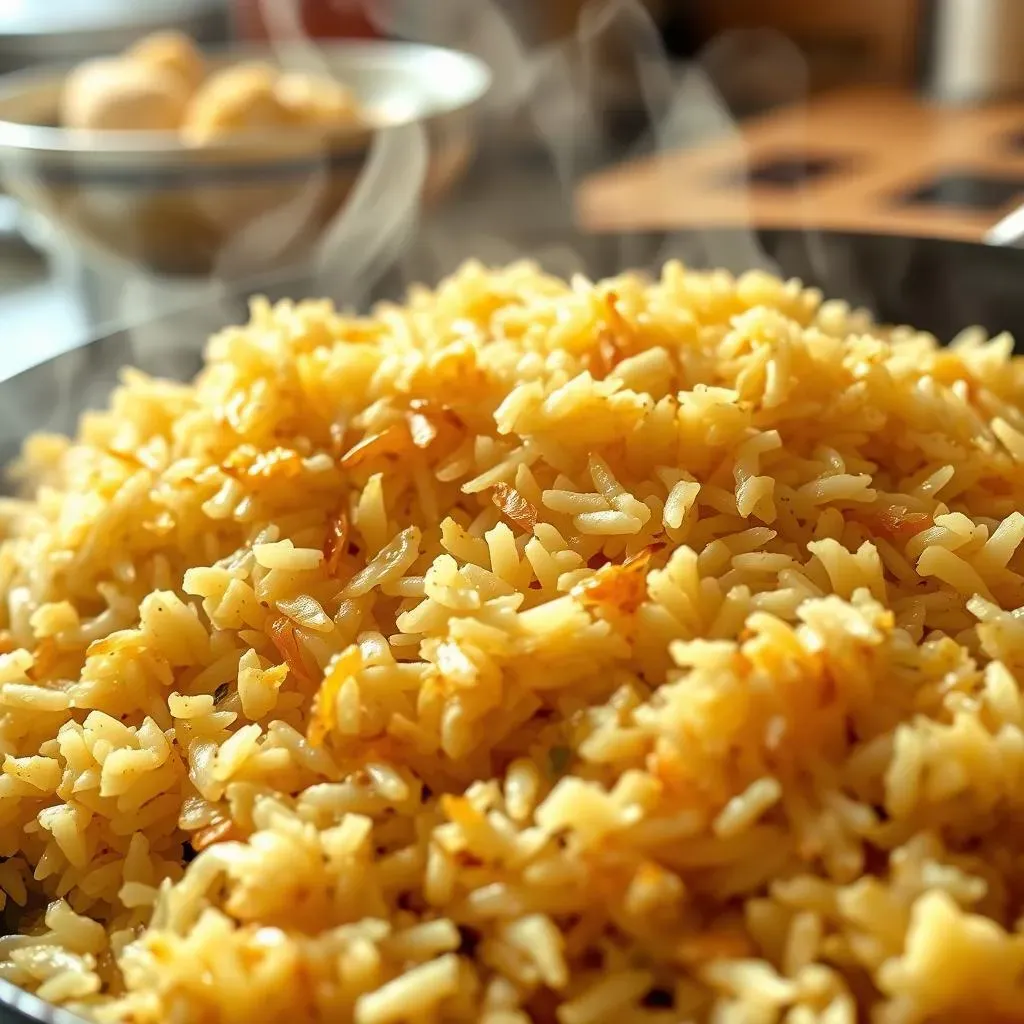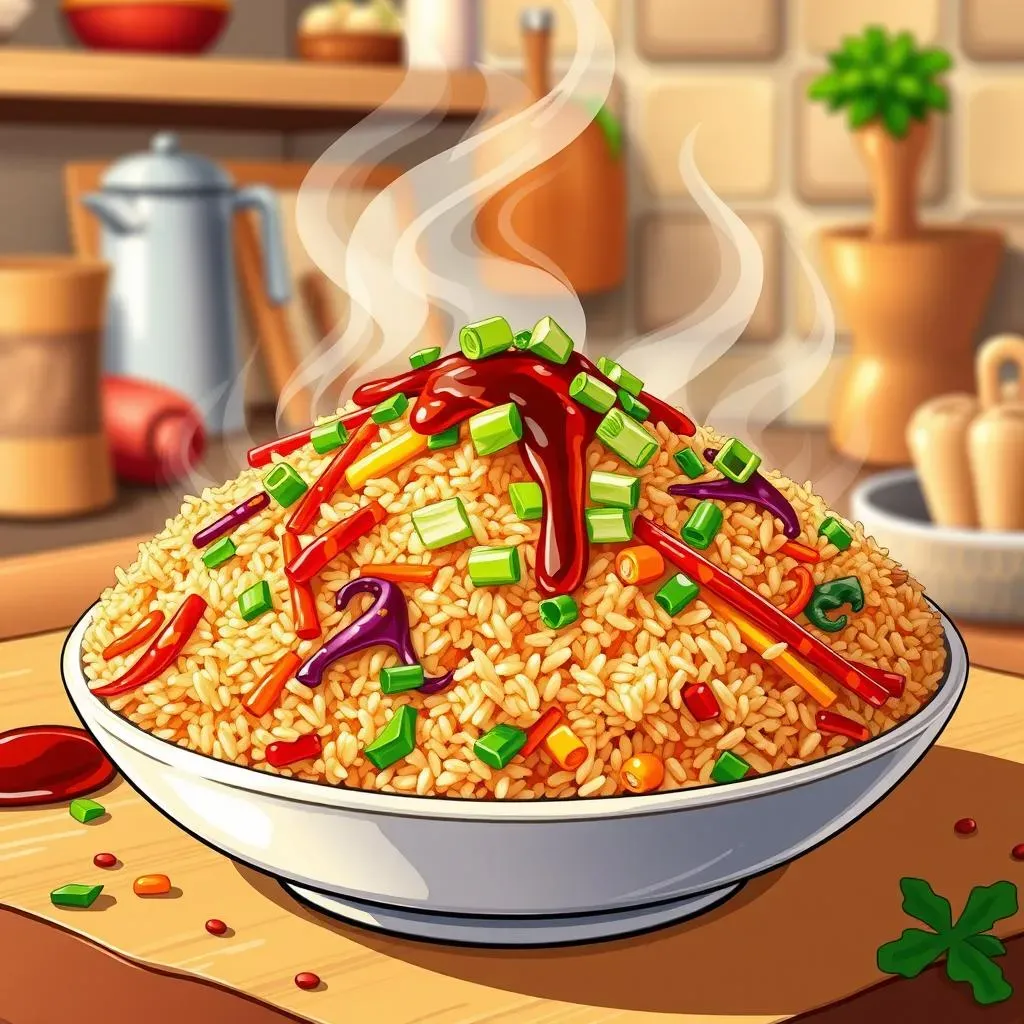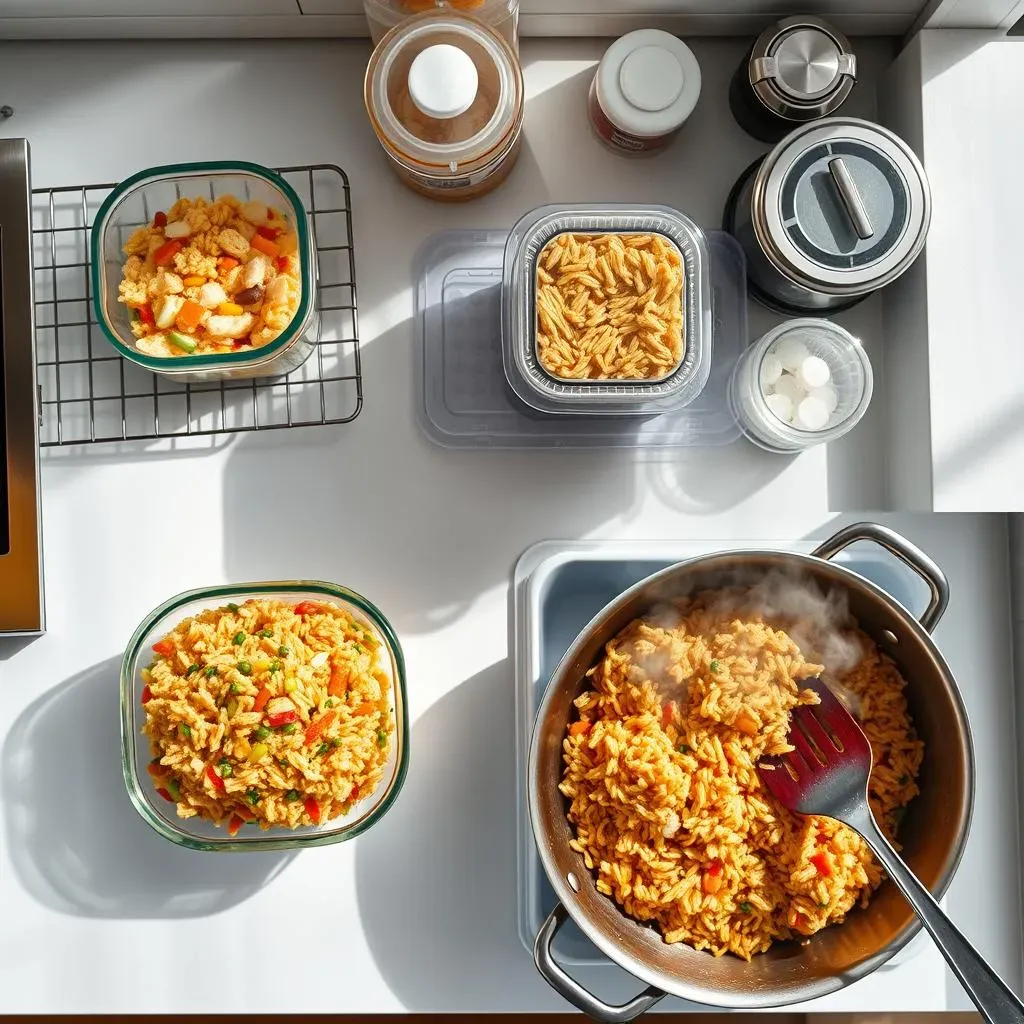Table of Contents
Ever wondered what is the best modern dish for fried rice? Forget those bland takeout versions, because we're about to revolutionize your fried rice game. I've been making fried rice for years, and let me tell you, it's not just about tossing ingredients into a pan. It’s about understanding the magic of cold, day-old rice, the power of a secret ingredient (hint: it's butter!), and how to customize it to your heart's content. This isn't just a recipe; it's a guide to creating your ultimate fried rice experience. We'll explore the essential techniques, discuss how to adapt it to your dietary needs with low-carb options, and even how to add a protein punch. Plus, we will cover how to store and reheat, so you can enjoy your culinary masterpiece days later. Ready to transform your kitchen into a fried rice haven? Let's get started!
The Secret to the Best Modern Fried Rice

The Secret to the Best Modern Fried Rice
Okay, so you want the real deal, the secret sauce to amazing fried rice? It's simpler than you think, but you gotta listen up! First, forget about using freshly cooked rice; that's a rookie mistake. You need cold, day-old rice. Seriously, that's key. Fresh rice is too moist and will turn your fried rice into a sticky mush. Day-old rice has dried out a bit, which lets it fry up perfectly, getting those slightly crispy edges we all crave. And here's the kicker – butter. Yes, butter! Ditch the oil; butter adds a richness and depth of flavor that oil just can't match. It also helps the rice brown beautifully. Trust me, this isn't your average takeout recipe.
Key Element | Why It Matters |
|---|---|
Cold, Day-Old Rice | Dries out, prevents mushiness, allows for crisping. |
Butter | Adds flavor and helps with browning. |
Customize Your Perfect Fried Rice Dish

Customize Your Perfect Fried Rice Dish
Alright, so you’ve got the base down, the secret to not making mush. Now, let's talk about making this fried rice truly yours. This is where the fun begins! Think of your fried rice as a blank canvas. What are you craving? Veggies? Load ‘em up! I personally love adding bell peppers, onions, and some frozen peas for a pop of color and sweetness. But the beauty of fried rice is its versatility. You can add carrots, broccoli, mushrooms, whatever your heart desires. Don't be shy; experiment a little! And for those who like a little heat, add some chopped jalapeños or a dash of sriracha. The key is to chop everything into small, uniform pieces so they cook evenly and don't overpower the rice.
- Veggies: Bell peppers, onions, peas, carrots, broccoli, mushrooms
- Heat: Jalapeños, sriracha, chili flakes
- Aromatics: Garlic, ginger, scallions
Don't forget the aromatics! A little bit of minced garlic and ginger goes a long way, adding that authentic flavor we all love. I usually add them right after the butter has melted and before tossing in the rice. It's like a mini flavor explosion that permeates the whole dish. And for a final touch, don't forget to garnish with some chopped scallions. They add a fresh, bright note that cuts through the richness of the butter and other ingredients. Seriously, this is where you get to play chef, so don't be afraid to get creative and make it your own. Want some extra flavor? A splash of soy sauce or sesame oil can do wonders.
Modern Twists: LowCarb and ProteinPacked Options for Fried Rice

Modern Twists: LowCarb and ProteinPacked Options for Fried Rice
Low-Carb Fried Rice: Rethinking the Base
Okay, so maybe you're watching your carbs, but you're still craving that fried rice goodness? No problem! The beauty of cooking is that you can adapt anything. Instead of traditional rice, try swapping it out for cauliflower rice. It’s surprisingly good and soaks up all the flavors beautifully. You can usually find it pre-riced in the freezer section, which makes things super easy. Or, if you're feeling adventurous, you can rice it yourself using a food processor. Another great option? Quinoa! It’s a complete protein and adds a nice nutty flavor. If you want to get even more creative, riced broccoli works wonders too. These alternatives give you that fried rice texture without the carb overload.
Alternative Base | Benefits |
|---|---|
Cauliflower Rice | Low-carb, readily available, mild flavor. |
Quinoa | Complete protein, nutty flavor. |
Riced Broccoli | Low-carb, adds extra nutrients. |
Protein Power-Ups: Adding Extra Muscle
Now, let's talk about adding some serious protein to your fried rice. This is where you can really make it a complete meal. For a classic option, you can’t go wrong with some diced chicken breast or pork tenderloin. Just cook it separately and toss it in at the end. But don't limit yourself! Shrimp is a fantastic addition, cooking quickly and adding a lovely seafood flavor. If you're vegetarian or vegan, tofu or tempeh are excellent choices. I like to pan-fry my tofu to give it a nice crispy exterior. And for a little extra kick, you can even add some edamame or black beans for a boost of plant-based protein. The possibilities are endless.
"The best way to predict the future is to create it." - Peter Drucker
Balancing Flavor and Health: It's All Possible
The key to making these modern twists work is to keep the flavors balanced. Don't be afraid to use bold seasonings and sauces. A little soy sauce, sesame oil, or even a dash of fish sauce can add depth without adding extra calories. And remember, it's all about experimentation. Don't be afraid to try new combinations and find what works best for your taste buds. So, whether you're looking for a low-carb option or a protein-packed meal, your fried rice can be both delicious and healthy. It's not just about following a recipe; it’s about making it your own.
Storing and Reheating Your Modern Fried Rice Dish

Storing and Reheating Your Modern Fried Rice Dish
Alright, so you've whipped up a batch of the best modern fried rice, and maybe, just maybe, you have some leftovers. Don't let that deliciousness go to waste! Proper storage is key to keeping your fried rice tasting fresh and not turning into a soggy mess. The first rule of thumb? Let it cool down completely before you even think about putting it away. Hot food in the fridge creates condensation, and that equals mushy rice. Once it's cooled, transfer it to an airtight container. You can store it in the fridge for up to 3-4 days. If you’re not planning on eating it that soon, you can freeze it for up to 2-3 months. Just make sure it's in a freezer-safe container.
- Cool completely: Before storing to avoid condensation.
- Airtight containers: To keep it fresh.
- Fridge storage: Up to 3-4 days.
- Freezer storage: Up to 2-3 months.
Now, the reheating part. Nobody likes sad, reheated food, right? The microwave is your quickest option, but it can sometimes leave the rice a little unevenly heated. To help with this, add a tablespoon of water or broth to the container before microwaving. It creates a bit of steam and helps keep the rice moist. Reheat in 1-minute intervals, stirring in between until it's heated through. For a better texture, try reheating in a skillet over medium heat. Add a touch of oil or butter to the pan, and stir-fry the rice until it’s heated through and slightly crispy again. An air fryer is another great option, especially if you want that crispy texture. Spread the fried rice in a single layer and air fry at 350°F (175°C) for about 5-7 minutes, shaking the basket halfway through.
Reheating Method | Pros | Cons |
|---|---|---|
Microwave | Quick, convenient | Can be uneven, may dry out |
Skillet | Crispy texture, even heating | Requires more time |
Air Fryer | Crispy texture, relatively quick | May require multiple batches |
"The only way to do great work is to love what you do." - Steve Jobs